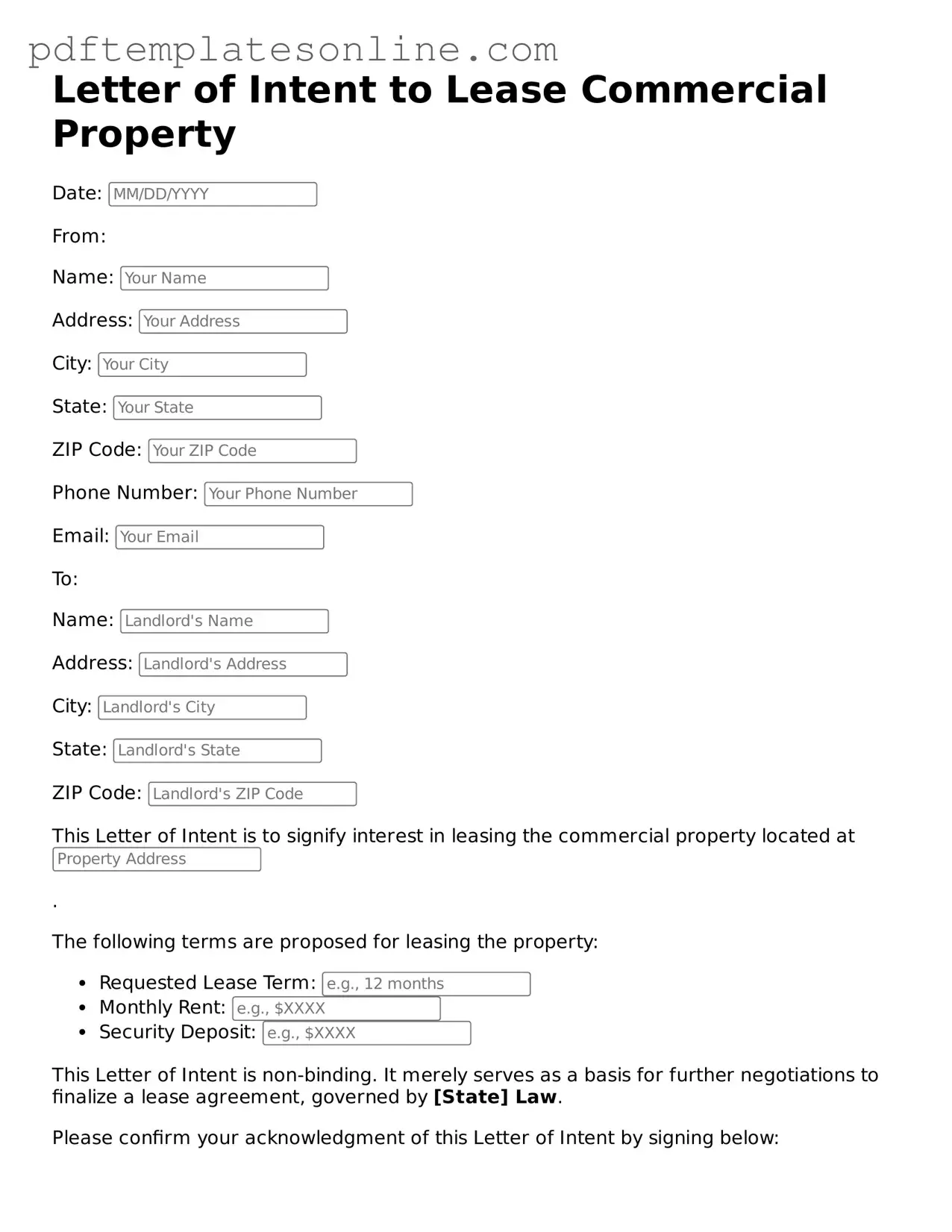Filling out a Letter of Intent (LOI) to lease commercial property can be a daunting task. Many individuals make common mistakes that can lead to misunderstandings or complications later on. One frequent error is failing to specify the exact terms of the lease. Without clear details about the rental rate, lease duration, and renewal options, both parties may have different expectations, which can create conflict.
Another mistake is neglecting to include a clear description of the property. It's essential to detail the specific location, square footage, and any additional spaces included in the lease. This oversight can lead to confusion over what is actually being leased, potentially resulting in disputes down the line.
People often overlook the importance of including contingencies in the LOI. These might involve conditions such as obtaining financing or securing necessary permits. By not addressing these contingencies, you risk committing to a lease that you may not be able to fulfill.
Additionally, many individuals fail to consider the importance of timelines. Without a clear timeline for the lease negotiations and the move-in date, both parties might operate under different assumptions. This lack of synchronization can lead to delays and frustration.
Another common pitfall is not involving legal counsel early in the process. Some individuals believe they can handle the LOI on their own, but legal expertise can help identify potential issues and ensure that all terms are fair and legally binding. Ignoring this step can lead to costly mistakes.
People also frequently underestimate the significance of including all relevant parties in the discussions. If there are multiple stakeholders, such as business partners or investors, failing to involve them can lead to disagreements later. Everyone should be on the same page to avoid confusion.
Furthermore, neglecting to outline responsibilities for maintenance and repairs can create problems. If the LOI doesn’t specify who is responsible for upkeep, disputes may arise once the lease is in effect. Clear communication about these responsibilities is crucial.
Lastly, many individuals forget to review the LOI thoroughly before submission. Rushing through the process can lead to errors or omissions that could have been easily corrected. Taking the time to review the document can prevent misunderstandings and ensure that all terms are accurately represented.
